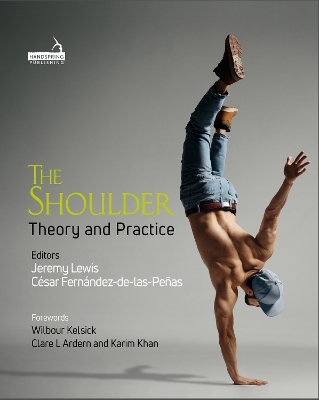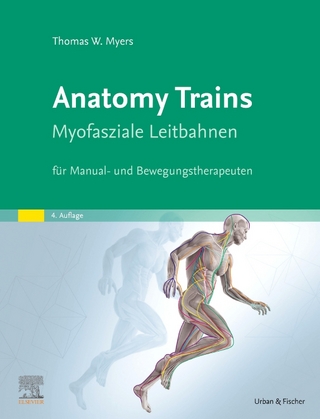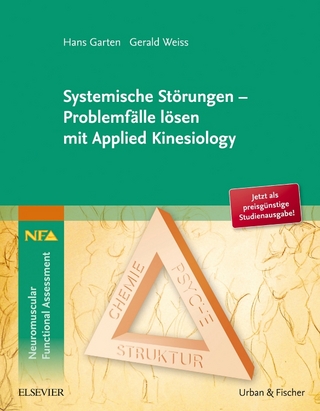
The Shoulder
Handspring Publishing Limited (Verlag)
978-1-913426-17-0 (ISBN)
This book is a team project-led by two internationally renowned researchers and clinicians, Jeremy Lewis and César Fernández-de-las-Peñas. Other members of the team include over 100 prominent clinical experts and researchers. All are at the forefront of contributing new knowledge to enable us to provide better care for those seeking support for their shoulder problem. The team also comprises the voices of patients with shoulder problems who recount their experiences and provide clinicians with important insight into how better to communicate and manage the needs of the people who seek advice and guidance.
The contributing authors include physiotherapists, physical therapists, medical doctors, orthopedic surgeons, psychologists, epidemiologists, radiologists, midwives, historians, nutritionists, anatomists, researchers, rheumatologists, oncologists, elite athletes, athletic trainers, pain scientists, strength and conditioning experts and practitioners of yoga and tai chi. The cumulative knowledge contained within the pages of The Shoulder: Theory & Practice would take decades to synthesise.
The Shoulder: Theory & Practice is divided into 42 chapters over three parts that will holistically blend, as the title promises, all key aspects of the essential theory and practice to successfully support clinicians wanting to offer those seeing help the very best care possible. It will be an authoritative text and is supported by exceptional artwork, photographs and links to relevant online information.
César Fernández-de-las-Peña PT, PhD, DrMedSci, is full professor at Universidad Rey Juan Carlos (URJC), Madrid, Spain, where he is also leader of the Clinical Pain Research Group on Manual Therapy and Exercise. He combines his research activity with clinical practice as Head, Division of Physical Therapy Department, at the University Physical Therapy Clinic. He received a bachelor's degree in physical therapy from URJC, a first PhD from Aalborg University in Denmark on the subject of headaches (2007) and a second PhD in Spain (2008). He obtained his Doctoral Degree in Master Sciences in Aalborg in 2012 on the topic of central sensitization in chronic pain syndromes. He has received several awards for his research and clinical practice. Cesar has published around 550 peer-reviewed publications and is the first-named author of approximately 250. His research activities are concentrated on the neuroscience of pain. He has more than 200 peer-reviewed papers on upper quadrant pain syndromes, including shoulder pain conditions. His personal interest is the integration of manual therapy, dry needling and exercise interventions for the management of chronic pain conditions of the upper extremity. In his clinical practice Cesar treats patients with chronic pain disorders, particularly neck and shoulder pain. His clients include professional sport players whose activities involve the upper extremity, such as climbers, boxers, and basketball players. His premise is: "integrating clinical practice with research is the key for our patients" Cesar is often invited to present keynote lectures at international conferences, and he has taught workshops in over 20 countries. He is the main editor of 10 textbooks on manual therapy for chronic musculoskeletal pain including Temporomandibular Disorders, also published by Handspring Publishing. He is one of the Editors of the third edition of Travell, Simons & Simons' Myofascial Pain and Dysfunction: the Trigger Point Manual and is the co-editor of Trigger Point Dry Needling: an evidence and clinical-based approach. Jeremy Lewis PhD FCSP is a consultant physiotherapist in the Central London Community Health Care Trust (UK National Health Service) and is also Professor of Musculoskeletal Research at the University of Limerick in the Republic of Ireland. He was born in New Zealand, trained in Australia, and lived there for some time before moving to the UK. Jeremy is acknowledged as an eminent clinician in his profession and has been awarded a Fellowship of the Chartered Society of Physiotherapy, the highest award the CSP can offer. His clinical practice and research have focussed on musculoskeletal conditions involving the shoulder. He has also completed an MSc (musculoskeletal physiotherapy), and has postgraduate diplomas in sports physiotherapy, and biomechanics. He is qualified as an Independent (non-medical) Prescriber, and as an MSK sonographer, and uses these skills to perform ultrasound guided shoulder injections, to complement his clinical practice.
Part I: Musculoskeletal Shoulder Problems
Chapter 1 Our Stories: living with shoulder pain
Chapter 2 The Evolution of the Human Shoulder and Upper Limb Function
Chapter 3 The Burden of Shoulder Pain and Disability
Chapter 4 Shoulder Anatomy and Function
Chapter 5 Lifestyle Factors
Chapter 6 Integrating a Biopsychosocial Approach
Chapter 7 Pain Neurosciences: where is my shoulder pain coming from?
Chapter 8 Red Flags, Inflammatory Conditions and Sinister Shoulder Pathology
Chapter 9 The Past, Present and Future of Shoulder Surgery
Chapter 10 Clinical Uncertainties: what do and don't we know about the shoulder?
Part II: Assessment and Management
Chapter 11 Communicating with People experiencing Shoulder Pain
Chapter 12 What Shoulder Outcomes to Assess and How to Measure Them
Chapter 13 Clinical Reasoning, Behavioral Changes and Shared Decision-Making
Chapter 14 The Role of Imaging, Blood Tests, EMG and Nerve Conduction
Chapter 15 Assessing and Classifying Musculoskeletal Shoulder Conditions
Chapter 16 Not a Shoulder
Chapter 17 The Unstable Shoulder: assessment and management
Chapter 18 The Stiff Shoulder
Chapter 19 The Weak Shoulder
Chapter 20 Posture
Chapter 21 Neurodynamics related to Shoulder Pain
Chapter 22 Hemodynamics and the Shoulder
Chapter 23 Injection Therapy in the Management of Shoulder Pain
Chapter 24 Shoulder Trauma
Chapter 25 The Pediatric and Adolescent Shoulder
Chapter 26 Biceps Tendinopathy
Chapter 27 Calcific Tendinopathy
Chapter 28 Reconsidering Assessment and Management of Proprioceptive Impairment
Chapter 29 When to Consider Surgery?
Chapter 30 The Role of Virtual Reality in the Management of Shoulder Conditions
Part III Manual Therapy, Needling, Modalities and Taping
Chapter 31 Hands-On (Manual) Therapy in the Management of Shoulder Conditions
Chapter 32 Needling in the Management of Musculoskeletal Shoulder Conditions
Chapter 33 Electrophysical Modalities in the Management of Shoulder Conditions
Chapter 34 Bracing and Taping in the Management of Shoulder Conditions
Part IV: Rehabilitation
Chapter 35 Musculoskeletal Shoulder Rehabilitation: motor control or strengthening?
Chapter 36 Shape-Up-My-Shoulder (SUMS) Rehabilitation Program
Chapter 37 Rehabilitation for the Unstable Shoulder
Chapter 38 Rehabilitation of Throwing-Related Shoulder Injuries
Chapter 39 Rehabilitation in Swimmers
Chapter 40 High Performance Rehabilitation of the Climbing Athlete
Chapter 41 Rehabilitation after Shoulder Surgery
Chapter 42 T'ai Chi in Shoulder Rehabilitation
Chapter 43 Yoga Therapy in the Management of Musculoskeletal Shoulder Conditions
| Erscheinungsdatum | 29.03.2022 |
|---|---|
| Zusatzinfo | 240 color drawings and photographs |
| Sprache | englisch |
| Maße | 230 x 280 mm |
| Gewicht | 2420 g |
| Themenwelt | Medizin / Pharmazie ► Physiotherapie / Ergotherapie ► Behandlungstechniken |
| ISBN-10 | 1-913426-17-3 / 1913426173 |
| ISBN-13 | 978-1-913426-17-0 / 9781913426170 |
| Zustand | Neuware |
| Informationen gemäß Produktsicherheitsverordnung (GPSR) | |
| Haben Sie eine Frage zum Produkt? |
aus dem Bereich


